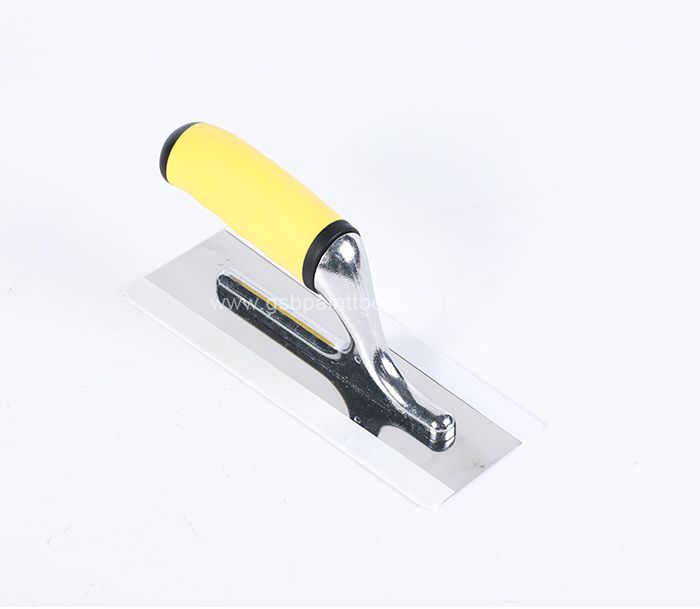How to use Stainless Steel Venetian Trowel?
Stainless Steel Trowel is a flat tool used to repair plaster, cement, and similar materials. Spatulas with rough wooden surfaces are usually more popular in plastering murals; spatulas can be made by fixing an angled handle on a block of fir. In other types of gypsum processes, spatulas made of different materials such as cork, abrasion, felt or glass can be used.
Common tools for scraping putty.
Stainless Steel Venetian Trowel
1.Stainless Steel Venetian Trowel
The steel scraper consists of a wooden handle and a blade. Wooden handles can be made of pine, birch, etc., and pirated copies are made of steel with better elasticity. The cutting edge is required to be straight and made of oil-resistant and solvent-resistant rubber plates. The overall size and shape are determined according to their needs. The newly made rubber scraper uses approximately 100-gauge sandpaper to grind the cutting edge uniformly.
2. Rubber scraper
The rubber squeegee has very good elasticity and is very suitable for scraping and coating complex shapes, especially the corners and grooves are particularly applicable and convenient. The cutting edge can also be made into the corresponding shape according to the workpiece installation. Wipe it up after use.
3. Inlay knife (foot knife)
It is made of ordinary steel, with cutting edges at both ends and oblique blades at one end. It is also possible to use a fitter's hand saw blade to grind the cutting edge and wrap it with adhesive tape. Used to embed putty in eyes, gaps, or to remove foreign objects in corners and gaps
4. Putty tray
Made of 1.0 ~ 1.5mm low carbon steel plate, used for putty or dressing
5. Putty tray
Made of steel plate or wood board, put a small amount of putty when putty to facilitate construction. It can also be replaced by a thicker large steel scraper.
As a 6 Inch Paint Applicator Supplier, share with you 6 steps of cleaning paint brushes.
1. Get the tools ready
Before cleaning the paintbrush, we need to prepare all the tools, including a comb to comb the paintbrush, latex gloves, newspaper, three plastic bottles, paint thinner, plastic bags, goggles, and masks.
Arm yourself and protect your work area
Bring goggles, masks, and latex gloves to avoid paint splashing on yourself. Spread newspapers in the work area to avoid contamination from dripping paint. Flatten paper towels in another area to form a simple drying device. Remember to spread several layers. So that you can dry the paintbrush later.
3. Prepare the thinner
Fill the three plastic bottles prepared in advance with paint thinner, and then use a comb to brush off the excess paint attached to the paintbrush into the original paint can.
4, cleaning paint brushes
Soak the paintbrush in the first plastic bottle for 5 minutes, then remove the paintbrush and place it in a dry area to dry it. Remember not to exert too much force when squeezing the paintbrush. Change the place constantly until it is on the paper towel. There are less rare materials so far. Then repeat the above action on the second and third plastic bottles until the diluent becomes clean.
5.Dry up excess diluent
The thinner is in a relatively clean slate, which means that the paintbrush has been basically cleaned. Excessive thinner attached to the paintbrush is squeezed into a plastic bottle by hand, then the thinner is blotted with a paper towel, and the palm is beaten with the paintbrush. Until no paint splashes out.
















